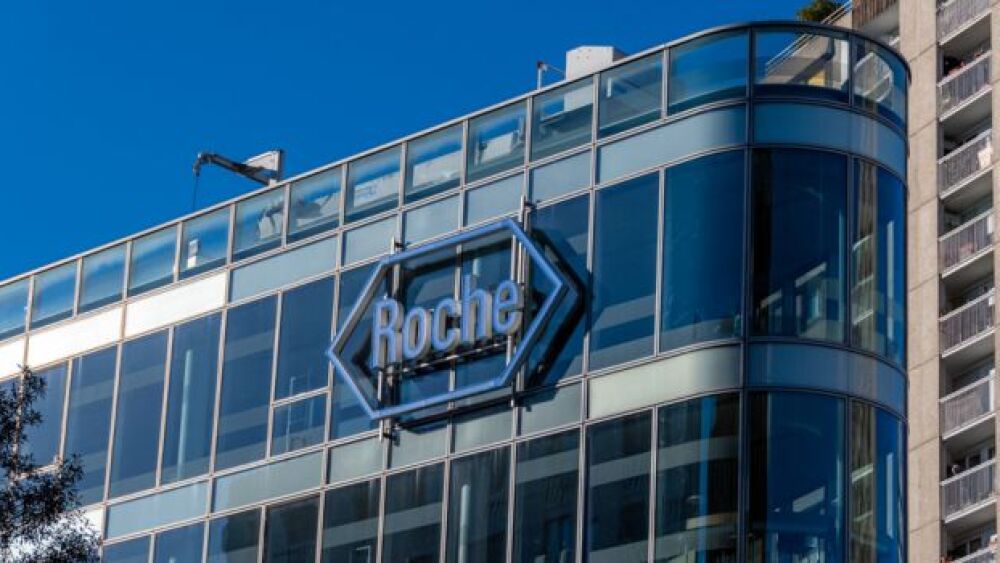BEDMINSTER, N.J., Oct. 11 /PRNewswire-FirstCall/ -- NPS Pharmaceuticals, Inc. today reported top-line results from the company’s Phase 3 study of its investigational drug GATTEX(TM) (teduglutide, recombinant GLP-2) in which 83 patients with short bowel syndrome (SBS) received either a low dose of GATTEX, (0.05 milligrams/kilogram/day), a higher dose (0.10 mg/kg/day) or placebo. The clinical efficacy endpoint of the study was a reduction in parenteral nutrition (PN) of at least 20% comparing baseline to weeks 16 to 24, measured as a graded response to capture reductions up to 100%. In an intent-to-treat analysis, forty-six percent (46%) of patients receiving the lower dose of GATTEX (N=35) responded and achieved a highly statistically significant reduction in PN compared to placebo (p=0.007), with two patients gaining independence from and discontinuing PN by week 20 and a third patient discontinuing PN at the end of treatment. Twenty-five percent (25%) of patients receiving the higher dose of GATTEX (N=32) responded and showed a trend in the difference between the treatment group and placebo, but this did not reach statistical significance (p=0.161). The study’s criteria for conducting the statistical analysis of the primary endpoint required that the results for the high-dose group show statistical significance before the results of the low-dose group could be considered. However, given the drug’s orphan designation in SBS and the statistically strong (p=0.007) and clinically meaningful findings in the low-dose group, the company intends to meet with the FDA to discuss the path to regulatory approval for GATTEX.
Dr. Stephen O’Keefe, professor of medicine and director of the Center for Intestinal Health & Nutrition Support, University of Pittsburgh Medical Center, said, “Judging from these top-line results, teduglutide is an exciting new treatment option for our patients with intestinal failure due to massive intestinal loss. We eagerly await the peer review and publication of the full results of this international, multi-center clinical trial to determine the specific indications for this new therapeutic advance.”
In this Phase 3 study, there were no statistical differences in the incidence rates of adverse events or serious adverse events among the treatment groups when compared to placebo.
The study’s Data Safety Monitoring Board (DSMB) found that GATTEX was generally well tolerated and demonstrated clinical benefits. Additionally, the DSMB supported the company’s recommendation to continue the ongoing extension study. Ninety-two percent (92%) of the 71 patients who completed the Phase 3 trial enrolled in the extension study.
Dr. Tony Coles, president and CEO of NPS, stated: “The results of the study underline the importance of GATTEX as a potential new standard of care for SBS. We are particularly encouraged to see a reduction in PN over six months in patients with SBS who received the lower dose of GATTEX. Patients who responded to this dose were able to reduce their reliance on parenteral nutrition by over 20%, which represents a clinically meaningful benefit, and we are very excited that two of the 35 patients on the lower dose were able to eliminate their PN entirely by week 20, and a third patient was also able to stop PN altogether at week 24. We look forward to presenting these findings at an upcoming medical meeting and further exploring the full range of clinical benefits of GATTEX. We remain committed to making GATTEX available to patients as soon as possible and intend to meet with regulatory agencies to discuss next steps for regulatory approval. We also plan to continue our current exploration of GATTEX in other indications with high unmet needs, including chemotherapy-induced GI mucositis and necrotizing enterocolitis.”
There are several hypotheses that may explain the higher response in the low-dose group versus the higher-dose group. One theory is that, at higher doses, GLP-2 suppresses appetite and it is possible that patients on the higher dose consumed fewer calories from food and thus did not decrease their PN regimens. A second hypothesis is that GLP-2 exerts various dose-dependent effects and may act by increasing nutrient absorption at low-doses while higher doses of GLP-2 may have a greater effect on mucosal and epithelial regeneration.
Dr. Daniel Drucker, director, Banting and Best Diabetes Centre at the University of Toronto and the scientist who discovered the role of GLP-2, commented, “Recently published animal studies demonstrate that lower doses of GLP-2 can enhance nutrient absorption through enhancement of mechanisms promoting nutrient transport across the gut epithelium and via improved intestinal cell survival, while higher doses of GLP-2 can result in mucosal regeneration. These observations suggest that lower doses of GATTEX may have the greatest potential for effectively treating short bowel syndrome by improving nutrient absorption, while higher doses of GATTEX may have the greatest potential for effectively treating other gastrointestinal disorders where mucosal regeneration may be more important.”
Study Design and Top-Line Results
This multicenter, double-blind, international Phase 3 trial was designed to evaluate the efficacy, safety, tolerability and pharmacokinetics of GATTEX compared with placebo in patients with parenteral nutrition (PN)-dependent short bowel syndrome. Eighty three (83) patients who were enrolled in the trial were randomly assigned to receive daily subcutaneous injections of 0.05 milligrams or 0.10 milligrams of GATTEX per kilogram of body weight or a placebo for six months after an evaluation period of three days to eight weeks and a period of stabilization of four to eight weeks. A total of 71 patients completed the study with a 14.5% dropout rate.
The clinical efficacy endpoint of the study was a reduction in parenteral nutrition (PN) of at least 20% comparing baseline to weeks 16 to 24, measured as a graded response to capture reductions up to 100%.
The dose levels were selected based on the results of the GATTEX Phase 2 proof-of-concept study where doses of 0.03, 0.10 and 0.15 mg/kg/d were administered. Since this study had few subjects in the 0.03 mg/kg/d low dose group, it proved difficult to determine the effects of a low dose. Therefore a low dose of 0.05 mg/kg/d was selected for the Phase 3 study. The highest dose (0.15mg/kg/d) did not seem to provide any additional benefit compared to the 0.10 mg/kg/d dose, therefore the 0.10 mg/kg/d dose was selected as the maximum dose for the Phase 3 study.
Sixteen of the 35 patients (45.7%) receiving the low dose of GATTEX (0.05 milligrams/kilogram/day) demonstrated a 20 percent or greater reduction in parenteral nutrition (PN) (p-value 0.007), compared to eight of 32 patients (25%) in the high-dose group (0.10 mg/kg/day) (p-value 0.161), and one of 16 patients (6%) in the placebo group.
In this Phase 3 study, there were no statistical differences in the incidence rate of adverse events or serious adverse events among the treatment groups when compared to placebo.
Statistical Analysis
The primary endpoint, originally a reduction of 20% or greater in PN measured at weeks 20 to 24, was expanded to account for duration and magnitude of effect. Pair-wise treatment comparisons were made using a rank analysis of covariance with strata for the baseline PN consumption level used for the stratification of the randomization and treatment group with the baseline weekly PN volume as a covariate. A step-down sequential testing procedure was used to analyze dose response.
In the first step of the statistical analysis, the high-dose teduglutide group was compared with the placebo group using a 0.05 significance level. If the high-dose group was not statistically significantly different from the placebo group, no further comparisons would be made. If the high-dose group showed statistical significance, comparisons were to continue to a second analysis step, where the low dose was to be compared with the placebo.
Phase 2 Proof-of-Concept Study Results
In the Phase 2 GATTEX proof-of-concept study, the drug was given by subcutaneous injection for 21 days to 16 patients with SBS. Three patients received 0.03 mg/kg/day, ten patients received 0.10 mg/kg/day, and three patients received 0.15 mg/kg/day. Results of the Phase 2 study indicated that GATTEX was safe and well-tolerated, resulted in intestinal epithelial regeneration and significantly increased intestinal absorption and body weight in parenteral-nutrition-dependent SBS patients.
About SBS
SBS is a condition resulting from the surgical removal of significant portions of the bowel following injury or illness. There are 16,000 to 20,000 adult patients with SBS in the United States. Regulatory authorities in the U.S. and European Union have granted orphan drug status to teduglutide for its potential use, if approved, in treating SBS. Symptoms of SBS include diarrhea, dehydration, malnourishment, and weight loss caused by an inadequate absorption of nutrients and fluids from the diet. Long-term complications of the condition may include an increased risk of systemic infections due to the presence of an intravenous feeding line, degenerative changes in the bones and nerves due to vitamin and mineral deficiencies, and liver failure. Potential benefits derived from reduced dependence on intravenous feeding may include improved nutrition, lower rates of infections, and improved quality of life due to more time away from intravenous feeding, which may provide greater mobility and improved sleep. More information about SBS is available on the website, http://www.shortbowel.com and http://www.glucagon.com.
About GATTEX
A potential first-in-class drug, GATTEX is a proprietary analog of naturally occurring human glucagon-like peptide 2 (GLP-2), a peptide secreted primarily in the distal intestine and involved in the regeneration and repair of the intestinal epithelium. A previous Phase 2 proof-of-concept clinical study in patients with SBS showed that daily subcutaneous injections of GATTEX resulted in significant regeneration of the intestinal lining and improved dietary absorption of nutrients and fluids. Once the company has completed its analysis of data from the Phase 3 SBS study, it expects to pursue a pre-NDA meeting with the U.S. Food and Drug Administration to discuss its potential plan for submitting a New Drug Application. NPS is also pursuing development of GATTEX as a possible treatment for chemotherapy-induced gastrointestinal mucositis in cancer patients and necrotizing enterocolitis in preterm infants.
Conference Call Information
A conference call will be held today at 9:00 a.m. EDT. To participate in the call, dial (866) 770-7125 with passcode 66355061. International callers may dial (617) 213-8066 using the same passcode. In addition, live audio of the conference call will be simultaneously broadcast over the Internet and may be accessed on the company’s home page, http://www.npsp.com. A conference call replay will be available until October 22, 2007 at (888) 286-8010, or (617) 801-6888 for international callers, with passcode 47718436. The webcast will be available for replay and iPod(R) download for the same period.
Note: Statements made in this press release, which are not historical in nature, constitute forward-looking statements for purposes of the safe harbor provided by the Private Securities Litigation Reform Act of 1995. These statements are based on management’s current expectations and beliefs and are subject to a number of factors and uncertainties that could cause actual results to differ materially from those described in the forward-looking statements. All information in this press release is as of October 11, 2007 and we undertake no duty to update this information. A more complete description of these risks can be found in our filings with the Securities and Exchange Commission, including our Annual Report on Form 10-K for the year-ended December 31, 2006 and our Quarterly Report on Form 10-Q for the quarter-ended June 30, 2007.
CONTACT: Brandi Simpson of NPS Pharmaceuticals, +1-908-450-5616; or Media
Contact, Justin Jackson of Burns McClellan, +1-212-213-0006, for NPS
Pharmaceuticals, Inc.
Web site: http://www.npsp.com/
http://www.shortbowel.com/
http://www.glucagon.com/




